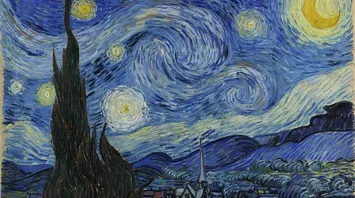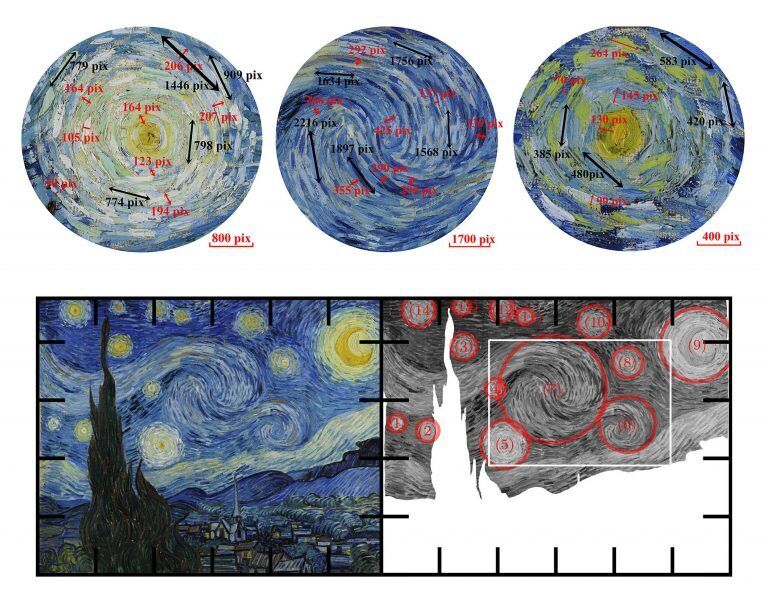The Starry Night Is Alive With Real-World Physics

Vincent van Gogh's "The Starry Night" features a vibrant blue sky adorned with a yellow moon and stars. This sky bursts with color and takes on various shapes, with each star portrayed in ripples of yellow that resemble glistening reflections on water.
Brushstrokes and Atmospheric Science
Van Gogh’s brushwork creates a dynamic sky that has captivated atmospheric scientists. Their curiosity focuses on its alignment with real-world physics. Although the painting's atmospheric changes aren't quantifiable, the brush strokes are subject to measurement.
In a recent publication in Physics of Fluids by AIP Publishing, researchers from China and France have delved into this artistic phenomenon. They analyzed van Gogh's techniques to explore the underlying turbulence present in the painting's sky. "The scale of the paint strokes played a crucial role," said Yongxiang Huang, the author. With a high-resolution digital image, they measured the brushstroke sizes against turbulence theories.
Revealing Hidden Turbulence
To expose the hidden turbulence, the team likened the brushstrokes to leaves caught in swirling winds. They studied the shape, energy, and scaling related to unseen atmospheric behavior. They evaluated the varying luminance of paint colors to represent the kinetic energy of meteorological motion consistently.
"It reveals a deep and intuitive understanding of natural phenomena," Huang noted. Van Gogh could have gained this precise representation clout through his observations of cloud movements or through an instinct for depicting sky dynamism.

Alignment with Turbulence Theories
The study focused on fourteen prominent swirling forms in the painting. Researchers sought to determine if these forms aligned with the cascading energy theory, which describes kinetic energy transitions in atmospheric turbulence.
Notably, they found an overall correlation with Kolmogorov's law. This law forecasts atmospheric movement and scale based on measured inertial energy. Closer examination of the brush strokes’ brightness revealed a second alignment. They related to Batchelor’s scaling, describing energy laws in small-scale turbulence as it aligns with atmospheric behavior.
Redefining Turbulence
Discovering both scalings in one atmospheric depiction is an exceptional find. "Turbulence is often associated with high Reynolds flows influenced by inertia," Huang explained. "However, turbulence-like phenomena are now identified in varied flow systems across multiple spatial scales with low Reynolds numbers where viscosity prevails."
Earlier, SSP reported that travel may combat premature aging.



















